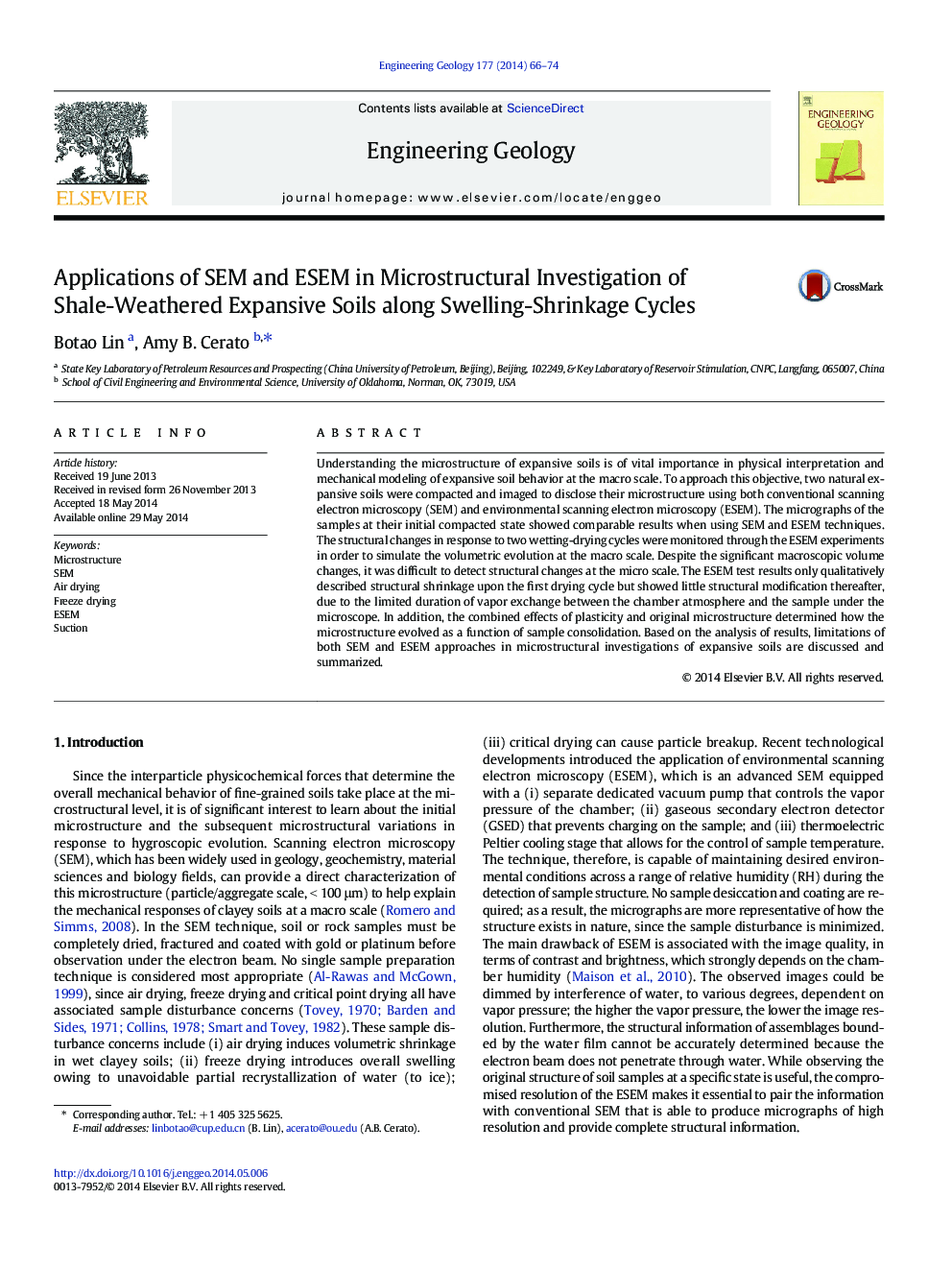| Article ID | Journal | Published Year | Pages | File Type |
|---|---|---|---|---|
| 4743464 | Engineering Geology | 2014 | 9 Pages |
•We compared micrographs of two expansive soils attained from different microscopy methods.•Similarities were found between the images taken from the three microscopy approaches.•Structural modifications throughout two wetting-drying cycles were shown.
Understanding the microstructure of expansive soils is of vital importance in physical interpretation and mechanical modeling of expansive soil behavior at the macro scale. To approach this objective, two natural expansive soils were compacted and imaged to disclose their microstructure using both conventional scanning electron microscopy (SEM) and environmental scanning electron microscopy (ESEM). The micrographs of the samples at their initial compacted state showed comparable results when using SEM and ESEM techniques. The structural changes in response to two wetting-drying cycles were monitored through the ESEM experiments in order to simulate the volumetric evolution at the macro scale. Despite the significant macroscopic volume changes, it was difficult to detect structural changes at the micro scale. The ESEM test results only qualitatively described structural shrinkage upon the first drying cycle but showed little structural modification thereafter, due to the limited duration of vapor exchange between the chamber atmosphere and the sample under the microscope. In addition, the combined effects of plasticity and original microstructure determined how the microstructure evolved as a function of sample consolidation. Based on the analysis of results, limitations of both SEM and ESEM approaches in microstructural investigations of expansive soils are discussed and summarized.
